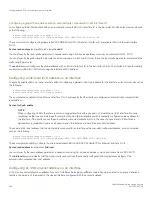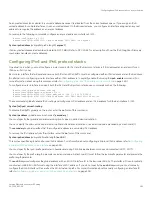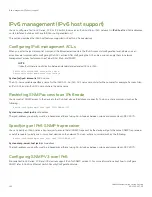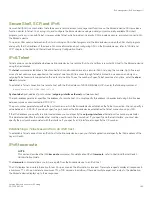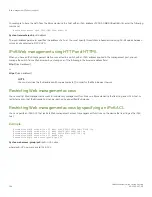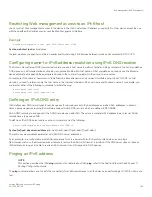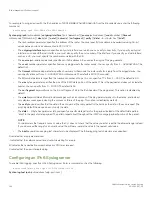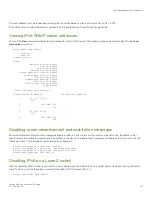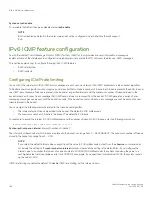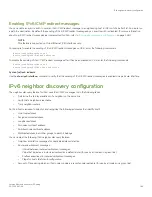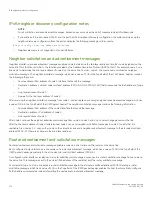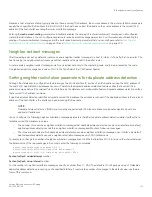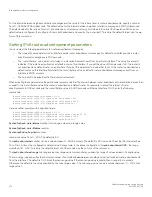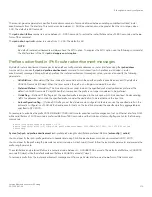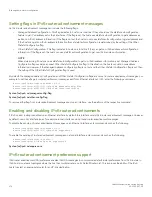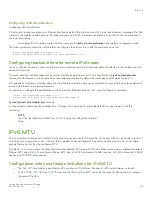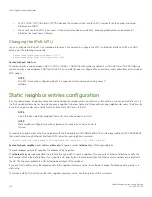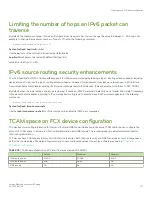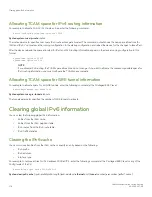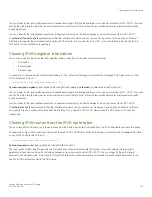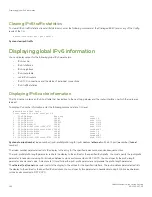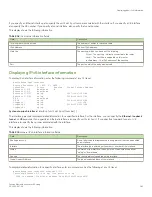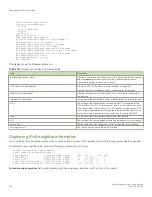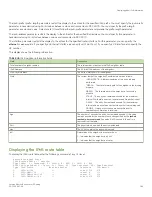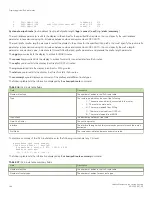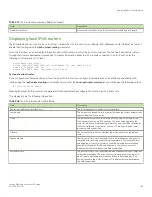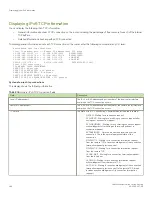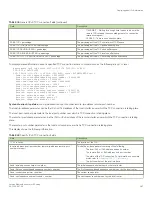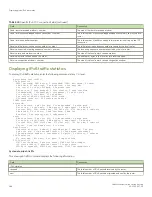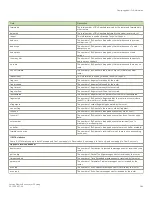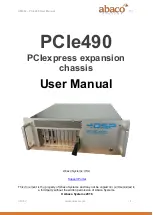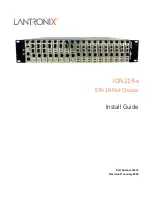
Setting flags in IPv6 router advertisement messages
An IPv6 router advertisement message can include the following flags:
•
Managed Address Configuration--This flag indicates to hosts on a local link if they should use the stateful autoconfiguration
feature to get IPv6 addresses for their interfaces. If the flag is set, the hosts use stateful autoconfiguration to get addresses as
well as non-IPv6-address information. If the flag is not set, the hosts do not use stateful autoconfiguration to get addresses and
if the hosts can get non-IPv6-address information from stateful autoconfiguration is determined by the setting of the Other
Stateful Configuration flag.
•
Other Stateful Configuration--This flag indicates to hosts on a local link if they can get non-IPv6 address autoconfiguration
information. If the flag is set, the hosts can use stateful autoconfiguration to get non-IPv6-address information.
NOTE
When determining if hosts can use stateful autoconfiguration to get non-IPv6-address information, a set Managed Address
Configuration flag overrides an unset Other Stateful Configuration flag. In this situation, the hosts can obtain nonaddress
information. However, if the Managed Address Configuration flag is not set and the Other Stateful Configuration flag is set, then
the setting of the Other Stateful Configuration flag is used.
By default, the Managed Address Configuration and Other Stateful Configuration flags are not set in router advertisement messages. For
example, to set these flags in router advertisement messages sent from Ethernet interface 1/3/1, enter the following commands.
device(config)#interface ethernet 1/3/1
device(config-if-e1000-1/3/1)#ipv6 nd managed-config-flag
device(config-if-e1000-1/3/1)#ipv6 nd other-config-flag
Syntax:
[no] ipv6 nd managed-config-flag
Syntax:
[no] ipv6 nd other-config-flag
To remove either flag from router advertisement messages sent on an interface, use the
no
form of the respective command.
Enabling and disabling IPv6 router advertisements
If IPv6 unicast routing is enabled on an Ethernet interface, by default, this interface sends IPv6 router advertisement messages. However,
by default, non-LAN interface types, for example, tunnel interfaces, do not send router advertisement messages.
To disable the sending of router advertisement messages on an Ethernet interface, enter commands such as the following.
device(config)#interface ethernet 1/3/1
device(config-if-e1000-1/3/1)#ipv6 nd suppress-ra
To enable the sending of router advertisement messages on a tunnel interface, enter commands such as the following.
device(config)#interface tunnel 1
device(config-tnif-1)#no ipv6 nd suppress-ra
Syntax:
[no] ipv6 nd suppress-ra
IPv6 router advertisement preference support
IPv6 router advertisement (RA) preference enables IPv6 RA messages to communicate default router preferences from IPv6 routers to
IPv6 hosts in network topologies where the host has multiple routers on its Default Router List. This improves the ability of the IPv6
hosts to select an appropriate router for an off-link destination.
IPv6 neighbor discovery configuration
FastIron Ethernet Switch Layer 3 Routing
174
53-1003627-04
Summary of Contents for FastIron SX 1600
Page 2: ...FastIron Ethernet Switch Layer 3 Routing 2 53 1003627 04 ...
Page 16: ...FastIron Ethernet Switch Layer 3 Routing 16 53 1003627 04 ...
Page 20: ...FastIron Ethernet Switch Layer 3 Routing 20 53 1003627 04 ...
Page 142: ...FastIron Ethernet Switch Layer 3 Routing 142 53 1003627 04 ...
Page 150: ...FastIron Ethernet Switch Layer 3 Routing 150 53 1003627 04 ...
Page 200: ...FastIron Ethernet Switch Layer 3 Routing 200 53 1003627 04 ...
Page 214: ...FastIron Ethernet Switch Layer 3 Routing 214 53 1003627 04 ...
Page 350: ...FastIron Ethernet Switch Layer 3 Routing 350 53 1003627 04 ...
Page 476: ...FastIron Ethernet Switch Layer 3 Routing 476 53 1003627 04 ...
Page 588: ...FastIron Ethernet Switch Layer 3 Routing 588 53 1003627 04 ...

